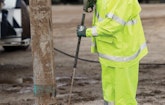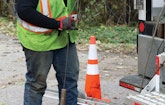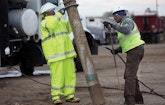
The water recycling capabilities of the AquaStar is crucial on more remote jobs where city water is scarce.
Steve Taplin has been cleaning up since he was a kid. His father and mother started a cluster of companies in Kalamazoo, Michigan, under the name of A&B Sewer Cleaning and Taplin was well on his way to learning the ins and outs of the business by 16.
A&B evolved from residential...









